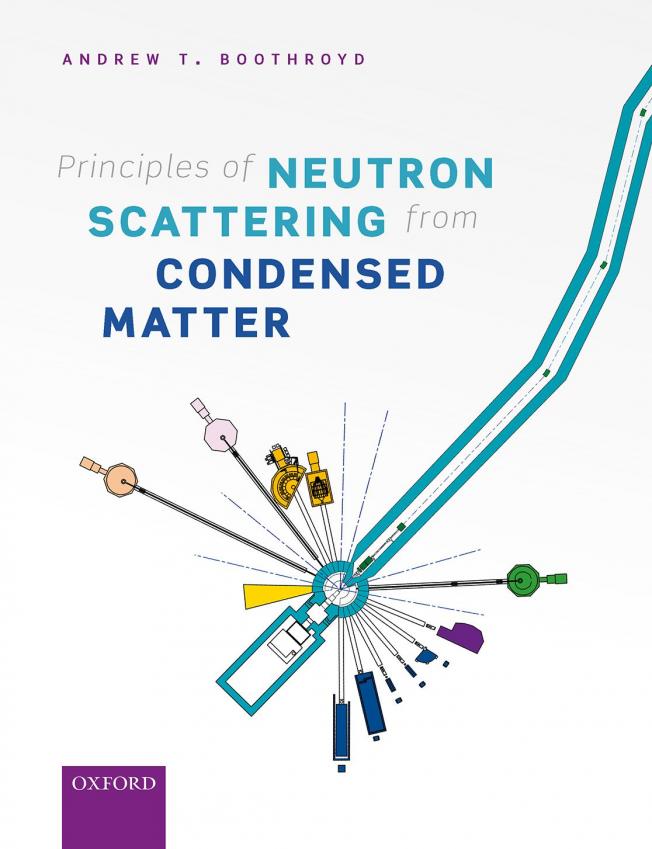Spin dynamics in the antiferromagnetic phases of the Dirac metals AMnBi2 (A = Sr, Ca)
Physical Review B American Physical Society 95:13 (2017) 134405
Abstract:
The square Bi layers in AMnBi2 (A= Sr, Ca) host Dirac fermions which coexist with antiferromagnetic order on the Mn sublattice below TN=290 K (Sr) and 265 K (Ca). We have measured the spin-wave dispersion in these materials by triple-axis neutron spectroscopy. The spectra show pronounced spin gaps of 10.2(2)meV (Sr) and 8.3(8)meV (Ca) and extend to a maximum energy transfer of 61-63 meV. The observed spectra can be accurately reproduced by linear spin-wave theory from a Heisenberg effective spin Hamiltonian. Detailed global fits of the full magnon dispersion are used to determine the in-plane and interlayer exchange parameters as well as well as the magnetocrystalline anisotropy constant. To within experimental error we find no evidence that the magnetic dynamics are influenced by the Dirac fermions.Spindynamics in the antiferromagnetic phases of the Dirac metals $A$MnBi$_2$ ($A=$ Sr, Ca)
(2017)
Inelastic neutron scattering investigations of an anisotropic hybridization gap in the kondo insulators: CeT2 Al10 (T=Fe, Ru and Os)
Solid State Phenomena 257 (2017) 11-25
Abstract:
� 2017 Trans Tech Publications, Switzerland. The recent discovery of topological Kondo insulating behaviour in strongly correlated electron systems has generated considerable interest in Kondo insulators both experimentally and theoretically. The Kondo semiconductors CeT2Al10(T=Fe, Ru and Os) possessing a c-f hybridization gap have received considerable attention recently because of the unexpected high magnetic ordering temperature of CeRu2Al10(TN=27 K) and CeOs2Al10(TN=28.5 K) and the Kondo insulating behaviour observed in the valence fluctuating compound CeFe2Al10with a paramagnetic ground state down to 50 mK. We are investigating this family of compounds, both in polycrystalline and single crystal form, using inelastic neutron scattering to understand the role of anisotropic c-f hybridization on the spin gap formation as well as on their magnetic properties. We have observed a clear sign of a spin gap in all three compounds from our polycrystalline study as well as the existence of a spin gap above the magnetic ordering temperature in T=Ru and Os. Our inelastic neutron scattering studies on single crystals of CeRu2Al10and CeOs2Al10revealed dispersive gapped spin wave excitations below TN. Analysis of the spin wave spectrum reveals the presence of strong anisotropic exchange, along the c-axis (or z-axis) stronger than in the ab-plane. These anisotropic exchange interactions force the magnetic moment to align along the c-axis, competing with the single ion crystal field anisotropy, which prefers moments along the a-axis. In the paramagnetic state (below 50 K) of the Kondo insulator CeFe2Al10, we have also observed dispersive gapped magnetic excitations which transform into quasi-elastic scattering on heating to 100 K. We will discuss the origin of the anisotropic hybridization gap in CeFe2Al10based on theoretical models of heavy-fermion semiconductors.Effect of doping and defects in pyrochlore compounds
ACTA CRYSTALLOGRAPHICA A-FOUNDATION AND ADVANCES 73 (2017) C1020-C1020
Doping Dependence of Collective Spin and Orbital Excitations in Spin 1 Quantum Antiferromagnet La$_{2-x}$Sr$_x$NiO$_4$ Observed by X-rays
(2016)


